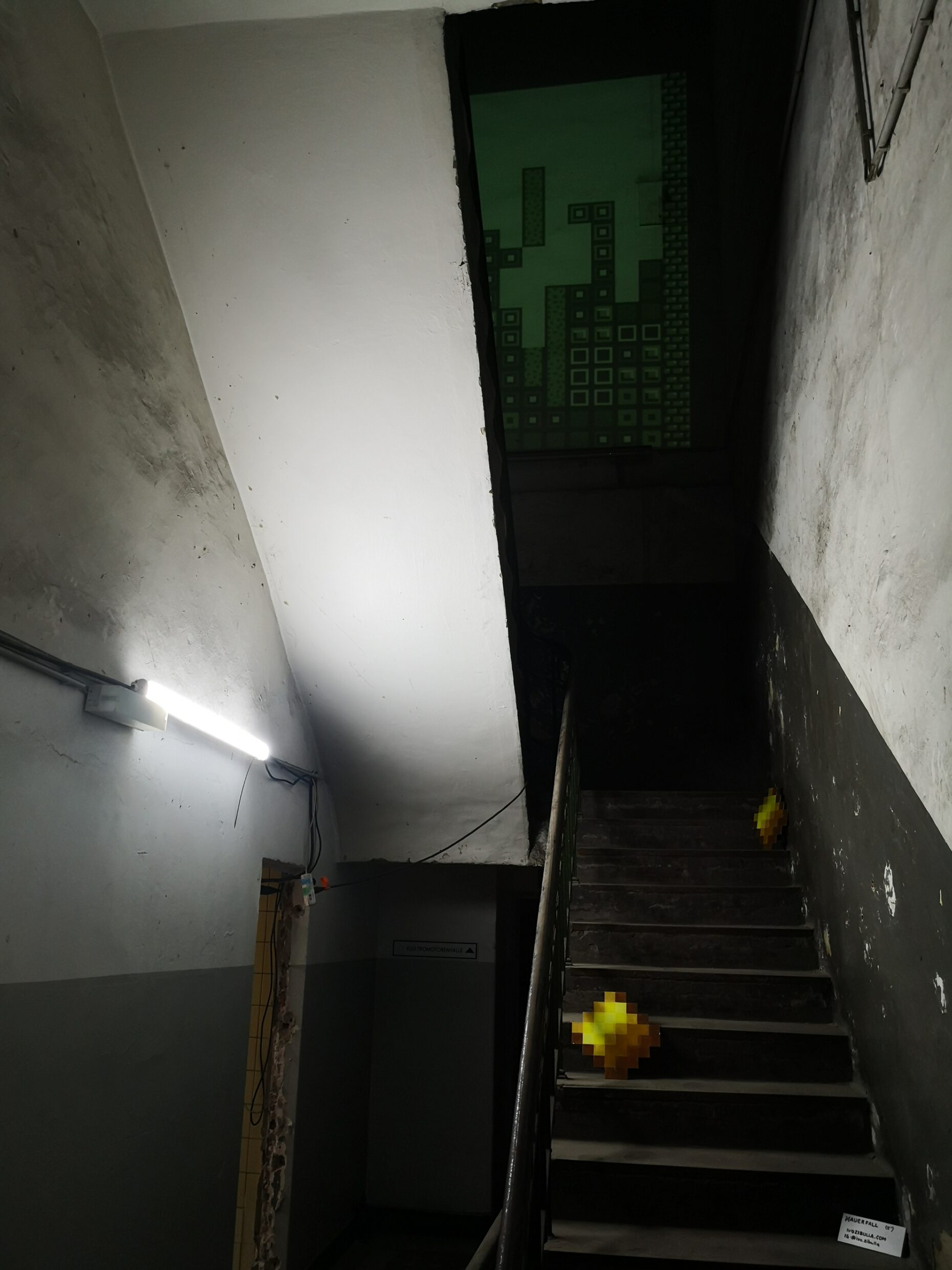Historical science narratives like to simplify the complexity of events. The perpetually falling blocks like in a water fall are a way to simulate how a historic event is not a neatly made up point in time in the past, but an ongoing transition from one state to another to another. Due to this particular event, I was introduced to globalism through western videogames in late 1990, brought on a Japanese console, with a game developed in the former USSR.
Within the complex is a small corridor connecting two bigger halls. A staircase is leading up to another floor which can’t be accessed due to the dilapitated state of the rooms. A few strange golden pixel artifacts loom on the stair and a name of the work: Mauerfall. Looking up, a quiet video installation fills the vertical back wall of the staircase. Tetris blocks continuosly falling from a cloud of blocks and disappearing in the void below. Every few moments, the cloud of blocks renew itself instead of diminishing. Luckily, after a few minutes, the last of the blocks falls into nowhere. The curtain falls, just to be opened again and the whole process starts again. The installation vibes a permanently looping sisyphean system of falling elements – like a waterfall.
Originally created as a piece to remind of the constant of change, and the ongoing process of psychological and socially reunification of the two former German states as it is far from being over.
Within the context of the current location, it wants to be a soothing reminder on the general futility of human activism. As soon as a space is not permanently fully taken care of by human activity, the whole of what is (aka reality) takes care of it and starts a process of complex rebalancing.
Thanks for reading all my explanations. I’m grateful for your interest!

